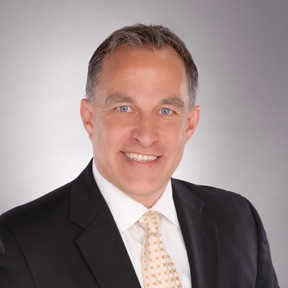Energy Transformation – providing low code solutions – Transcript ep. 3

Siemens Digital Lifecycle Excellence is impacting the energy industry. It is digitalizing the industries’ operation, resulting in substantial gains. In step with innovation, the Siemens’ Xcelerator software suite is addressing this industry and solving many data management issues.
In this third episode of the Energy Transformation podcast series, John Lusty, Global Industry Marketing Leader at Siemen Digital Industries Software, continues to talk with John Nixon, Senior Director of Energy and Utilities at Siemens. This episode discusses low-code application development and how it is changing the way businesses look at data and their software investments in the energy and utilities industry. Also, they talk about the future opportunities this opens for energy, process and materials companies.
Check out the transcript below or listen to the third audio podcast.
Read the transcript

John Lusty: Hello, everyone. My name is John Lusty and I’m the Global Lead for Industry Marketing, covering the energy and utilities industry here at Siemens Digital Industries Software, or DISW as we like to call ourselves within Siemens. Joining me today is John Nixon, our Senior Director, who owns the Energy and Utilities industry strategy at DISW. How’re you doing today, John?
John Nixon: Hey, we’re doing great. Have you seen these commodity prices today? Man, talk about volatility.

John Lusty: Crazy! So, for those of us who are unable to join us on the earlier podcast, we talked about how the energy and utilities business can adopt the Digital Lifecycle Excellence Approach to capture and consolidate all that valuable information that supports the complete lifecycle of their product, their project, or their plant, depending on the business model, so that the underlying data is available for reuse. Once their information is centralized, keeping it up to date becomes much more achievable. And then we can make it available to those who can use it as the knowledge foundation upon which problems can be solved and opportunities can be addressed using this digital twin of their assets.
In our second podcast, we discussed the use of the requirements management approach to data management, which is often a great place for companies to increase the value they get from their data without breaking the bank – showing a fast time-to-value and makes your project teams happy. So, if you missed either of those first two podcasts in this four-part series, please look them up and give them a run. There’s a lot of good material on there. (Links are provided at the bottom of this transcript).
So, this is the third installment of our four-part podcast series. Today, we’re going to talk about the use of low-code application development and how that’s changing the way businesses are looking at their data, looking at their software investments in the energy and utilities industry. So, John, we’re hearing all over the place now that low-code is all the rage in the IT world. As an industry leader at Siemens and looking to the future, what opportunities do you think this will open for energy, process and materials companies?
John Nixon: One of Energy’s challenges is making sure that when your new hires enter into your company, you’re not handing them the equivalent of, like, a Fortran card. So, one of the challenges we hear from clients is recruitment. There was a construction company we talked to at one time, they discussed how they have made significant investments to bring their level of digitalization up to modern times – if you will – because they’re not getting young people, young men and women to come work for them because they’re not seen as that next Silicon Valley innovative company: they’re a construction firm. So, recruitment has been rather difficult for many in this field. The investments that we’re starting to see from this industry are to bring it up to speed. Our kids were raised on Xbox and PlayStation and with iPhones and Androids, and there’s a level of sophistication that is expected to be found in the workplace. If your personal life is at that level, certainly your workplace should be at that level. So, the energy industry is having to make some significant investments in that space. So, as we talk about low-code, I’m excited about how low-code really represents a nimble and very effective solution; very nimble in many ways that is emblematic of what we see, with these other platforms that we are used to in our personal lives.
John Lusty: Yeah, exactly. We’re dealing with new hires that before long are going to never have known a world without Google. And they’re expecting to be able to customize applications and interact with them and learn them very fast, and that’s going to be a challenge. So, John, our careers, over the past decades – which we won’t talk about – have largely relied on commercially available off-the-shelf software to get our jobs done. And at times, it seemed to be a bit of a mixed blessing, right?
John Nixon: The interesting thing about commercially available off-the-shelf software is, in the past, if that’s what you purchased, that’s what you worked within. And so, you had to spend a lot of time just making sure that what you purchased would be updated and be available for the long haul. What wasn’t strong back in the – I hate to say – ‘90s – I know, aging myself – and the early 2000s was a focus on integration and interoperability. And integration was always a struggle. I mean, there were entire companies that evolved over the early 2000s. And all they did was provide integration solutions because they were such an afterthought for a lot of development that went on, especially in my space, the energy industry. So, the challenge has been with all this off-the-shelf software, are these companies find themselves hostage to that? Are they hostages to the selections that they’ve made? And a lot of people have made deep investments over the last decade or two. And interoperability is now a profound challenge for a lot of customers.
John Lusty: I remember speaking to an exec at a major oil and gas company that had just been through a significant merger with another major oil and gas company. And he had said that their total inventory of unique software was over 3,500 applications, and they were just having a devil of a time getting it all to work together. I don’t think they ever did. They wound up with a lot of silos of information. But I remember, he was frustrated, saying, “It wasn’t supposed to be like this. We bought the software; it was supposed to be better.” So, that one’s always stayed with me. In our industry, we’ve got a lot of different business types: We’ve got service providers; equipment OEMs and EPCs – the Engineer, Procure, Construct contractors; we’ve got owner-operators. Regardless of your business type, we’re all striving to make our execution more efficient. So, John, you spent a lot of time in your career in the field; to what extent do you think that field operations really participated in that revolution of automation that, as you said, started in the ‘90s, and arguably earlier? What was that like?
John Nixon: It’s funny you asked that, because when you talk about field operations, automation wasn’t necessarily synonymous with that for the last two or three decades. I would do things on very large projects, for example, where I would bring out a three-ring binder, and I would have to fill out forms as I was visually inspecting work performed on welds, bolt ups, and Hydrotests – things like that. And it was always shocking to me how everything was so very manual in the field, and how all this data would be gathered. And then the equivalent, at some companies, of “automation,” or let’s say, the optimization of business processes was, “Well, hey, we created some spreadsheets.” So, you go back and key those in. Well, now you’ve got thousands of spreadsheets on hundreds of laptops on these very large projects. And when contractors leave and they take their laptops with them, a lot of those spreadsheets go with them as wll. So, the field has been screaming for the ability to capture data and automate the process of updating what we now call the digital twin; back then, we may not have used that term.
But if you’re going to gather thousands and thousands of data points on these projects daily, and you’re going to do this and you’re going to automate it – then there’s a digital frontier that needs to evolve. So, I would say, well, field operations are now in the more recent times. We’re starting to see “automation” really happening in that space. The field operations have been more of a demand; they have forced that change. Because we have lagged – we, meaning the energy industry – so far behind the manufacturing industries when it came to data creation, and then aggregation, and that interoperability environment to then bring it all together into a digital twin. John, you’re seeing field operations are now becoming a part of that digital twin.
John Lusty: Yeah, absolutely. It’s going to be a huge help. In the days before I became the polished marketing professional on the other end of the mic with you now, I, too, was in operations and an aqueous chemistry specialist. And I remember having the drawing rolled out on top of a surface condenser at a chemical plant that I was working on one time, and I knew from my readings that the vessel was not operating as it was supposed to; the temperatures weren’t adding up. And I remember very specifically scratching my head to think, “Is it because the vessel is in upset conditions? Or was that drawing from back in 1976 when they built the plant within the last 20 years” – because this was back in the ‘90s – “Did they modify the vessel and not record the changes? I don’t know.” I remember trying to tell and that type of story happens again and again. But hey, here at Siemens DISW, we know as much as anybody that the software business is very, very challenging. We’re a big software company, even though most people don’t really realize that. Many of our customers are involved in more than one industry too, and they want to use their software tools and reuse those investments across all their businesses.
So, our Xcelerator Portfolio, that toolset that is comprised of everything from design to simulation to data management, etc – it is designed to provide the most comprehensive digital twin available across all of our eight industry segments, but also to be open and flexible and interoperable. But even with all that, each customer is unique and even amongst similar business models – two owner-operators in the same business – hey, they’re 85 percent the same, it’s another 15 percent that you’ve really got to watch. But as you mentioned earlier, new hires, such as millennials and those who are going to follow, are looking at modern business challenges and they’re coming up with new ways to address them. But some of what they want to do just weren’t thought of when we developed the software. So, with the rise of low-code or rapid application development, we’re hearing being applied across the industries and all parts of our major customers. Where do you see this capability helping people in field operations first, John?
John Nixon: Field operations is where you start. And of course, we’re all products of our pedigree, if you will. In other words, you look at your career and the challenges within your career, and it shapes your understanding. For me, one of the – to use the metaphor – low-hanging fruit that I see is a field service application. So, inspection and test, for example. You’ve got men and women who go out and they’ll do a visual inspection, gather that data. And in the past, you did it manually, or you might do it on a ruggedized tablet, but again, with a spreadsheet. And so, you didn’t have a lot of integration between the data that’s been gathered and the home office to make sure that what you had as the physical reality in the field was matched correctly to the digital twin. In other words, all the data gathered that everyone else was visualizing. So, I see, with a low-code platform, some quick application. People are going to search for applications that “I can use right now;” “What can I do today in the field to gather data and integrate to my digital twin?” As we like to say nowadays. Now, eventually, though, it’s more than just applications, as much as “I’ve got a business process that we use, and I want to streamline or automate that business process.”
But if it means I’m going to have to sit down with another company every single time, and we’re going to have to map it out and explain it and add a lot of time and expense and investment; some customers have come to us and said, “Well, I’d like a platform. I would like to have my business personnel, actually, just do the apps. I mean, they live it every day, let’s get them to start coding up the solution that I need.” Well, great. So, that’s why we made this big investment in Mendix because think about it, we’ve got this entire range of solutions that are available, but you can’t think of everything. You’ve got to be able to meet some very acute short-term demand challenges that exist, which always occur in the field, and enter Mendix, the ability then to code up these applications. So, I think what happens is people move from “I need to get an app today. “
And by the way, when we bought Mendix, there was this huge ecosystem of partners to Mendix that are all out there using that platform to code up these apps. So, great, you go to the Mendix environment, you can find the apps you need. Maybe that’s all you want; you want to purchase those apps. But then you start to evolve and grow in maturity and you think, “You know what? I actually want to bring on the platform.” And it’s almost like the CIO relief valve. So, instead of every business participant needing to go back and have the IT department pull something together, how good would it be if they could code directly as a division, and know that what they have will fully integrate to whatever they’re using as a backbone? That’s what we’re talking about here. We’re moving from – if I can use the metaphor – the fish to the fishing pole. Start with the applications, and then with the confidence of their functionality and interoperability, there’s the platform. And that’s when you start to really transform the digital investment, and the digital maturity of your organization.
John Lusty: And I’ve heard from the teams out in the market that are taking the platform approach. What companies are doing by installing the platform and learning how to fish, John, extend your example, is they’re getting closer to the technology and they’re building templates that already align to their business processes, that uses their standard language, their vernacular so that users in their system can very quickly come up to speed on how to use the tool. And I think you took the training too, John, on Mendix; you’re up to speed quick.
John Nixon: Yeah, it was like within two weeks, I had the first certification. What’s wonderful about the training? It’s not a bunch of PowerPoint slides and “Here’s what you should do;” it’s you get deeply involved right away in the tool. You use it as part of the training – so when you come out of it, it’s like, “All right, I’m ready to start dragging and dropping and putting business processes together and automating my workflow.”
John Lusty: I think it’s going to be exciting, especially for the people in the field. I always have a soft spot for people working in the plant out in the middle of nowhere, because they don’t get close to a lot of that automation we were talking about earlier. Before we wrap up, John, we always like to talk about one real customer example, who’s doing this in the field. Have you got somebody in mind in the energy industry that you’d heard about that you want to highlight?
John Nixon: Well, one company in particular – and again, we’ve got a press release out there – is ConocoPhillips. They’ve used our low-code technology to reduce the time needed to develop their own applications for internal use by 40 to 90 percent. In fact, they told us once that a simple tool they’d built to optimize steam production and demand has saved them somewhere on the order of, I think, $12 million. So, there are some real-world use cases out there that we’ve published, that demonstrate the efficacy and return on the use of low code.
John Lusty: I think the other thing that jumps out with the use of technology in the industry now is it’s given our friends in the IT department a whole new lease on life. They’re way beyond putting outlook on your desktop now. It’s given them an ability to be able to make a direct influence on the business and brings that CIO, if you will, to be able to contribute at the table with the CFO and the COO, in terms of using all the resources and the intellectual property available to a company to be able to quickly – if we don’t have an application that will give us that insight – have somebody build it, and it doesn’t need to be a software engineer. So, this is going to be highly disruptive in the software industry. And it’ll be interesting to watch even within our own company, John.
So, everybody, we hope you found this short discussion interesting and educational. Low-code has the potential to be, as I mentioned, very disruptive in the traditional software world. And if adoption rates are really any indicator, especially here in Energy, that trend is accelerating rapidly.
So, for more information, check out the DLE webpage at www.siemens.com/dle. There you can learn more about low-code by watching an on-demand webinar, downloading an ebook or an infographic.
And for even more detail, you might want to try the Mendix website because we still have it up and running – Mendix operates as a business within Siemens – it’s at www.mendix.com, as we’ve retained that site to allow a deeper dive into that cool technology.
So, plan to tune in for our fourth podcast, where we’ll be talking about how a systems engineering approach is being adopted in the energy and utility space, and how it’s helping execution teams get past some of those traditional hurdles that have typically interfered with project execution.
And finally, feel free to connect with John and I – John Nixon, John Lusty – on LinkedIn. We love hearing about what’s working and what’s not working in the industry, and it’d be great to connect. And if you liked what you heard today, please give us a review and tell somebody else you know, who you think would benefit from the content.
Thank you and have a great day. Thanks, John.
John Nixon: Thank you.
Xcelerator, the comprehensive and integrated portfolio of software and services from Siemens Digital Industries Software, helps companies of all sizes create and leverage a comprehensive digital twin that provides organizations with new insights, opportunities and levels of automation to drive innovation.
For more information on Siemens Digital Industries Software products and services, visit siemens.com/software or follow us on LinkedIn, Twitter, Facebook and Instagram. Siemens Digital Industries Software – where today meets tomorrow.
Related links:
Energy Transformation podcast 01
Energy Transformation podcast 02
Energy Transformation podcast 03


